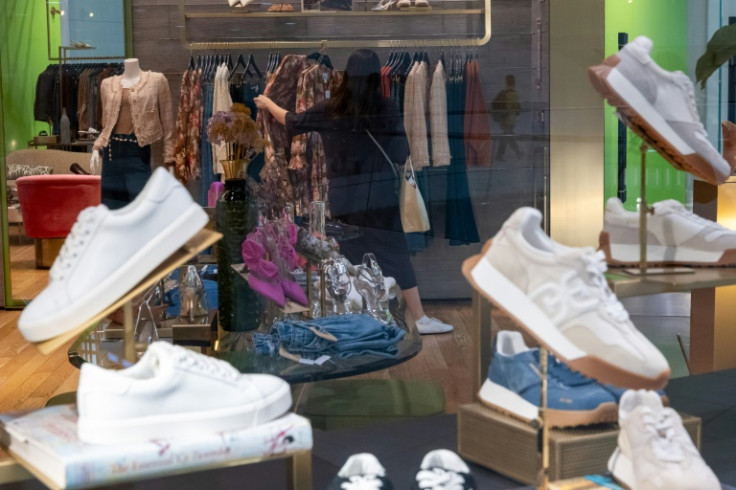US Economy Grows At Fastest Rate In Nearly Two Years

The US economy heated up more than expected in the third quarter, government data showed on Thursday, as a resilient job market helped boost consumer spending, holding off the prospect of a recession.
Analysts have raised fears of a downturn as the US central bank started lifting interest rates rapidly last year to fight inflation, but the world's biggest economy has so far defied these predictions.
A key factor is the strong labor market, which has provided healthy wage growth, allowing consumers to keep spending even as they draw down on pandemic-era savings.
Gross domestic product growth came in at an annual rate of 4.9 percent for the July to September period, the quickest pace since late 2021, according to Commerce Department data.
The latest GDP figure is a significant bump from the second quarter's 2.1 percent expansion, and much higher than the 4.0 percent analysts expected.
It also comes as President Joe Biden works to bolster sentiment on his handling of the economy as he seeks reelection in 2024.
"I never believed we would need a recession to bring inflation down -- and today we saw again that the American economy continues to grow even as inflation has come down," Biden said in a statement.
He called this "a testament to the resilience of American consumers and American workers," touting the effects of an economic agenda he dubs "Bidenomics."
The GDP pickup reflects "accelerations in consumer spending, private inventory investment, and federal government spending" among other factors, said the Commerce Department.
"The US economy continued to show remarkable resilience over the summer with surprisingly robust job growth and an unexpected consumer spending spree," said EY chief economist Gregory Daco.
"While these signs of economic strength will fuel speculations that the economy is reaccelerating, we do not expect such strong momentum will be sustained," he told AFP.
A 4.0 percent leap in consumption propelled GDP growth -- contributing 2.7 percentage points to the headline number, said Ian Shepherdson of Pantheon Macroeconomics.
But analysts expect growth to slow in the final three months this year.
"As excess savings built up during the pandemic continue to drop and wage gains decelerate, it is difficult to see how this pace of consumer spending growth can be maintained," said economist Mike Fratantoni at the Mortgage Bankers Association.
"We are now seeing some consumer stress in the rising delinquency rates for credit cards and auto loans," he added.
Apart from the drawdown in savings, employment gains are likely to cool while borrowing rates have risen further for consumers and businesses, said Nationwide chief economist Kathy Bostjancic.
For now, a robust growth figure adds to hope that the country can lower inflation without triggering a recession.
Treasury Secretary Janet Yellen was positive on the chances of that happening.
"What we have looks like a soft landing with very good outcomes for the US economy," she told Bloomberg on Thursday.
But if trends persist, policymakers could consider further interest rate hikes to rein in price increases in a sustainable way.
"A year-end recession now appears unlikely," said Michael Pearce of Oxford Economics.
But he cautioned: "There is still a strong case to expect a sharp downturn over coming quarters."
Bostjancic expects a "mild recession" in 2024, with the largest contraction taking place in the second quarter next year.
This comes as "tighter financial and lending conditions choke off economic activity," she said.
A separate report on Thursday showed that durable goods orders rose 4.7 percent in September, on the back of a surge in volatile transportation orders for aircraft.
© Copyright AFP 2025. All rights reserved.




















